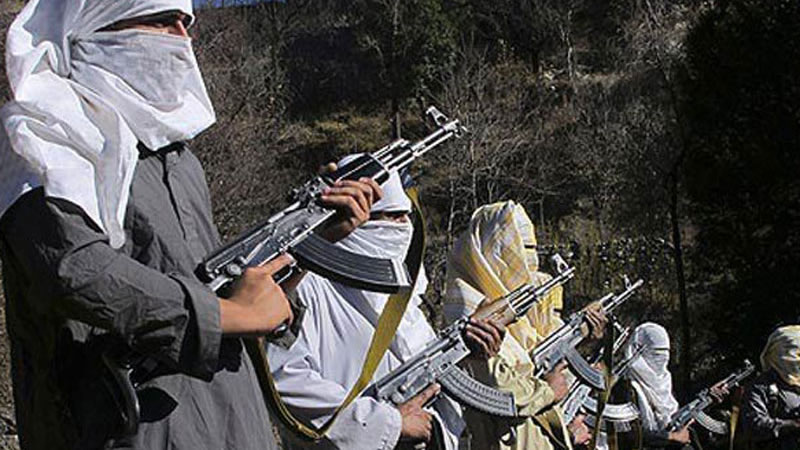 Pakistan Railways Headquarters has reportedly told its Divisional and District offices to stop all payments other than those essentially and critically required for day-to-day operations, plus salary and pensions, as the State Bank of Pakistan is not willing to give a blanket enhancement of overdraft limit, which has crossed Rs 40 billion mark despite substantial financial support from the government.The Railways has asked for Rs 27 billion from the government to keep rolling. SBP is genuinely aware of country’s tight fiscal position; it has certain legitimate fears that Pakistan Railways’ escalating reliance on SBP would only increase. It is precisely for this reason that President Asif Ali Zardari asked Governor SBP Shahid H. Kardar to prepare a rehabilitation plan for PR. Subsequently, a Rs 10 billion payout to PR – directly from SBP – was approved by the Cabinet.SBP’s reluctance to accede to government instructions is both understandable and plausible philosophically. With Pepco asking for Rs 165 billion to pay off the circular debt and PIA demanding Rs 57 billion in the head of a bail-out, a dangerous precedent would have been set. Therefore, the central bank now has to be extremely cautious and careful towards its approach to funding. A direct credit line from SBP amounts – literally and dangerously to currency note printing – the most inflationary form of financing.SBP wants to only fund PR’s essential operational needs, plus pay and pensions, as it awaits the delivery of proposed restructuring plan. The plan has to be first institutionalised. Measurable performance indicators need to be quantified – the only realistic way forward. Annual ad hoc payments to PR to plug its financial gaps have resulted in accumulation of doses to the tune of Rs 70 billion.Until the proposed restructuring plan is executed the only realistic option for SBP is to selectively bounce and honour PR cheques, provided SBP has the required technology, linking its treasuries spread over the country with its head office. Since this is not possible, monthly expenditure and revenue items incurred by PR need to be strictly monitored by PR management itself more strictly in accordance with instructions from the SBP.
Pakistan Railways Headquarters has reportedly told its Divisional and District offices to stop all payments other than those essentially and critically required for day-to-day operations, plus salary and pensions, as the State Bank of Pakistan is not willing to give a blanket enhancement of overdraft limit, which has crossed Rs 40 billion mark despite substantial financial support from the government.The Railways has asked for Rs 27 billion from the government to keep rolling. SBP is genuinely aware of country’s tight fiscal position; it has certain legitimate fears that Pakistan Railways’ escalating reliance on SBP would only increase. It is precisely for this reason that President Asif Ali Zardari asked Governor SBP Shahid H. Kardar to prepare a rehabilitation plan for PR. Subsequently, a Rs 10 billion payout to PR – directly from SBP – was approved by the Cabinet.SBP’s reluctance to accede to government instructions is both understandable and plausible philosophically. With Pepco asking for Rs 165 billion to pay off the circular debt and PIA demanding Rs 57 billion in the head of a bail-out, a dangerous precedent would have been set. Therefore, the central bank now has to be extremely cautious and careful towards its approach to funding. A direct credit line from SBP amounts – literally and dangerously to currency note printing – the most inflationary form of financing.SBP wants to only fund PR’s essential operational needs, plus pay and pensions, as it awaits the delivery of proposed restructuring plan. The plan has to be first institutionalised. Measurable performance indicators need to be quantified – the only realistic way forward. Annual ad hoc payments to PR to plug its financial gaps have resulted in accumulation of doses to the tune of Rs 70 billion.Until the proposed restructuring plan is executed the only realistic option for SBP is to selectively bounce and honour PR cheques, provided SBP has the required technology, linking its treasuries spread over the country with its head office. Since this is not possible, monthly expenditure and revenue items incurred by PR need to be strictly monitored by PR management itself more strictly in accordance with instructions from the SBP.
Pakistan Railways has been on a continuous slide ever since its reserves built over the years, meant for replacing its rolling stock, were eaten away by the Federal government. Non-railway bureaucrats were inducted to oversee its operations and expansion plans. PR, just like aviation, is a specialised field. Therefore, it was corporatised as an autonomous entity by the colonial rulers. Railway budget, fully independent of the Federal Budget, was presented to the parliament until the end of the 1960s. The decision to merge the Railways budget with the Federal budget to show an overall reduction in the government borrowing and pave way for bringing in non-railway managers at its helm, who did not oppose the merger, lies at the very root of PR’s woeful decline.Railways losses have crossed Rs 70 billion mark. In the last two years alone, the deficit rose by 68 percent. The operational deficit is now estimated to be above Rs 34 billion, which includes Rs 7 billion on account of a 50 percent increase in salaries and pensions announced in the FY11 budget. Ministry of Railways still seeks to get Rs 10 billion from SBP and the rest from the budget as an ad hoc payment. This needs to be responded with dogged resistance and dour persistence.It is interesting to note that PR management claims that it can operate with 15,000 less people. Will the PPP-led government back a right-sizing plan? The present sordid affair of KESC, however, does not give much hope! Only five percent of revenue is coming from 122 passenger trains, 15 percent is received from 72 inter-city trains and 80 percent from 40 freight trains. Political leaders who have acted as Minister incharge of Railways often argue that accumulated losses plus future capital needs of Railway can be met through the sale of PR land. This too is only possible if the help of provincial governments who have leased the land to railways for its own use is there. This also requires an institutional arrangement duly approved by the Council of Common Interests (CCI).
The challenge to resurrect Pakistan Railways is achievable provided the entity is corporatised and given a pure commercial orientation. This involves freeing PR from the clutches of the Railway Ministry by abolishing the latter. One needs to create an independent, all powerful Board of Directors answerable to the Federal Cabinet with full autonomy and power to bring in professional management.We did it successfully when Telephone & Telegraph department (T&T) was corporatised into Pakistan Telecommunication Corporation Limited (PTCL). With private sector management at the helm the accounting methods were significantly improved in order to ensure that financial data could be properly audited by international auditing firms and transparency was established for investors to have full confidence in government’s privatisation policies. Once PR’s financial needs are calculated in modern accounting terms only then can its operational needs be properly addressed to work out a capital expenditure plan for adequate expansion and maintenance of its stock of locomotives, bogeys and tracks. Only after this is satisfactorily done can private sector be attracted to utilise the Railways assets in the same way as the cellular companies and internet providers presently utilise PTCL’s country-wide optic fibre network.Although, the task is indeed formidable both in terms of time and money, it can be achieved. The million dollar question is: Are they willing to see reason? – Brecorder











